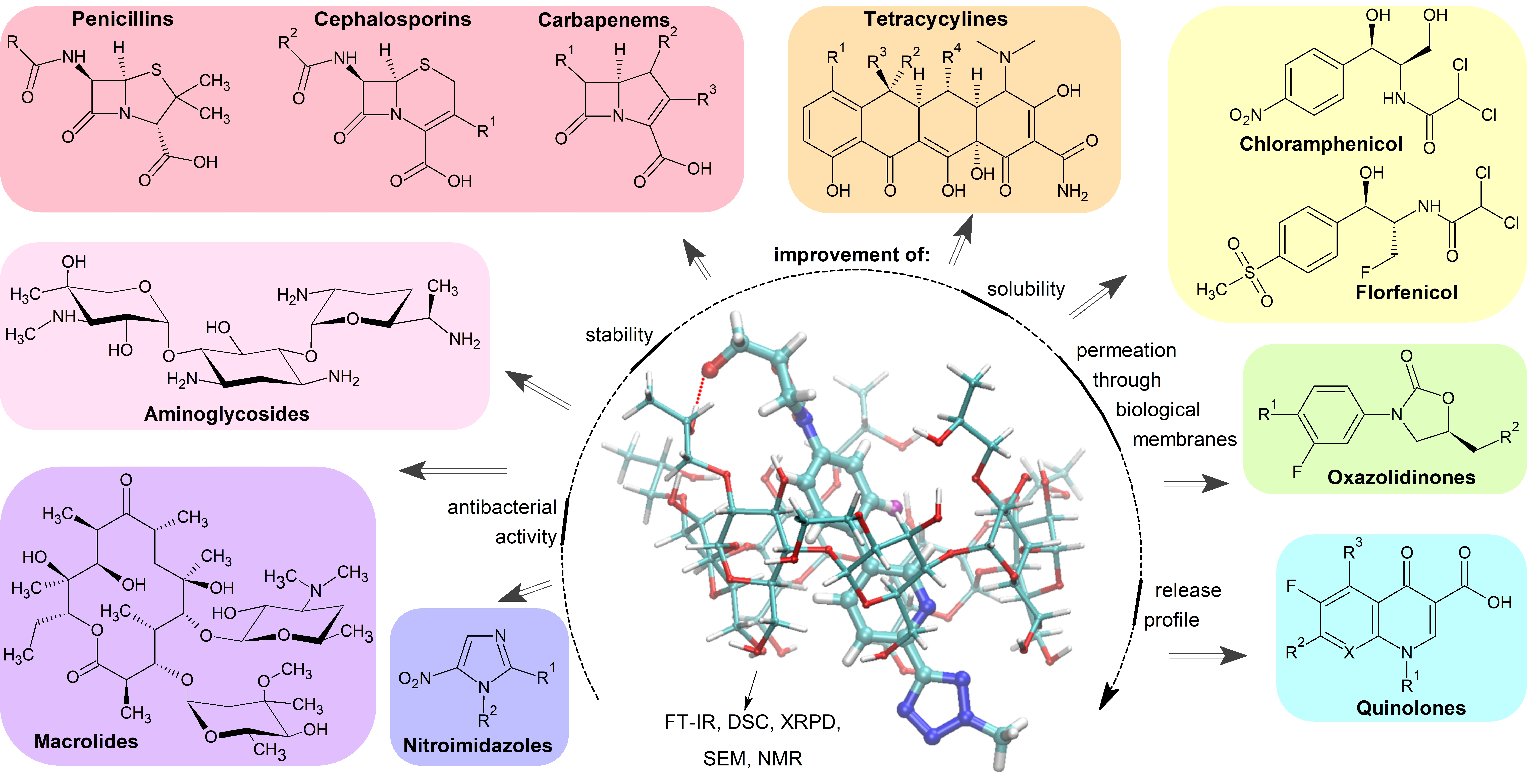Cyclodextrin Inclusion Complexes with Antibiotics and Antibacterial Agents as Drug-Delivery Systems—A Pharmaceutical Perspective

Cyclodextrins (CDs) are a family of cyclic oligosaccharides, consisting of a macrocyclic ring of glucose subunits linked by α-1,4 glycosidic bonds. The shape of CD molecules is similar to a truncated cone with a hydrophobic inner cavity and a hydrophilic surface, which allows the formation of inclusion complexes with various molecules. This review article summarises over 200 reports published by the end of 2021 that discuss the complexation of CDs with antibiotics and antibacterial agents, including beta-lactams, tetracyclines, quinolones, macrolides, aminoglycosides, glycopeptides, polypeptides, nitroimidazoles, and oxazolidinones. The review focuses on drug-delivery applications such as improving solubility, modifying the drug-release profile, slowing down the degradation of the drug, improving biological membrane permeability, and enhancing antimicrobial activity. In addition to simple drug/CD combinations, ternary systems with additional auxiliary substances have been described, as well as more sophisticated drug-delivery systems including nanosponges, nanofibres, nanoparticles, microparticles, liposomes, hydrogels, and macromolecules. Depending on the desired properties of the drug product, an accelerated or prolonged dissolution profile can be achieved when combining CD with antibiotics or antimicrobial agents.
Download the full article as PDF here Cyclodextrin Inclusion Complexes with Antibiotics and Antibacterial Agents as Drug-Delivery Systems—A Pharmaceutical Perspective
or read it here
Boczar, D.; Michalska, K. Cyclodextrin Inclusion Complexes with Antibiotics and Antibacterial Agents as Drug-Delivery Systems—A Pharmaceutical Perspective. Pharmaceutics 2022, 14, 1389. https://doi.org/10.3390/pharmaceutics14071389

